I’ve been incredibly fortunate over the past few years that I’ve been doing this website to have seen and tried on some incredibly cool watches. I’ve always tried to make a concerted effort, too, not to gravitate only to watches that appeal aesthetically to me, and instead try to look at other watches that might not necessarily be to my own tastes.
To my mind this is a really important part of this hobby, and I’ve found it serves to help me develop my personal preferences and also ensure that my opinions and preferences are as informed as they can be.
It’s one of the main reasons I would always advise people to go and try a watch on. Dial colours, case sizes, bracelets – you name it, any detail of a watch that you can forge an opinion of from photos, videos, and articles, can all be turned on their head in an instant through simply trying something for yourself and seeing it in person. It’s happened to me many times and I’m sure that any collector reading this will be able to relate!
One such area for me is gem-set watches. I’m not one for flashy things and I much prefer to be understated. A watch fully adorned with diamonds, or a bezel decorated with diamonds, sapphires, or rubies is not something that has ever really appealed to me aesthetically and isn’t something I would wear.
However there are certain ways in which use gem-setting is used more discretely, which I find more appealing. For example, on their platinum watches, Patek Philippe will place a ‘hidden diamond’ set in the case, such as on the Calatrava 5196P below. Equally, independent brand Lang & Heyne also set singular decorative diamonds in their movements, too.
Another option I could get on board with is baguette diamond hour makers – whilst a little more extravagant, they are still somewhat disguised and aren’t immediately recognisable as diamonds.
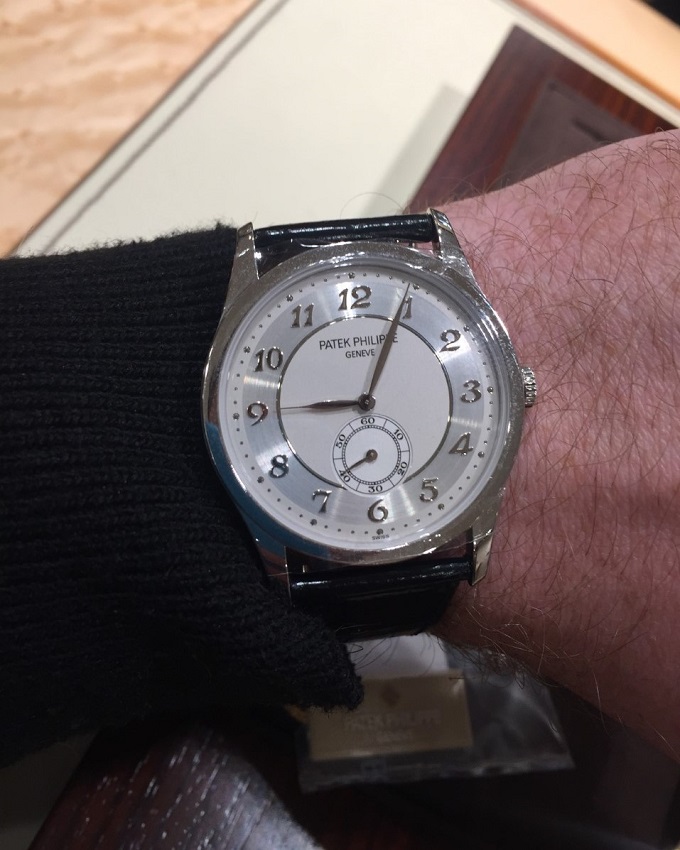
Patek Philippe Calatrava 5196P
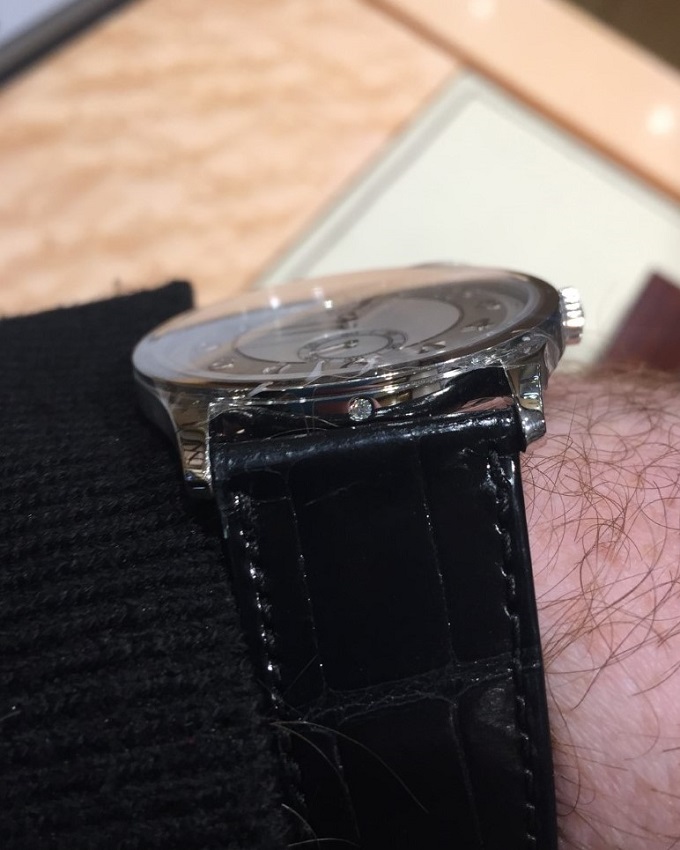
Hidden diamond set in the platinum case
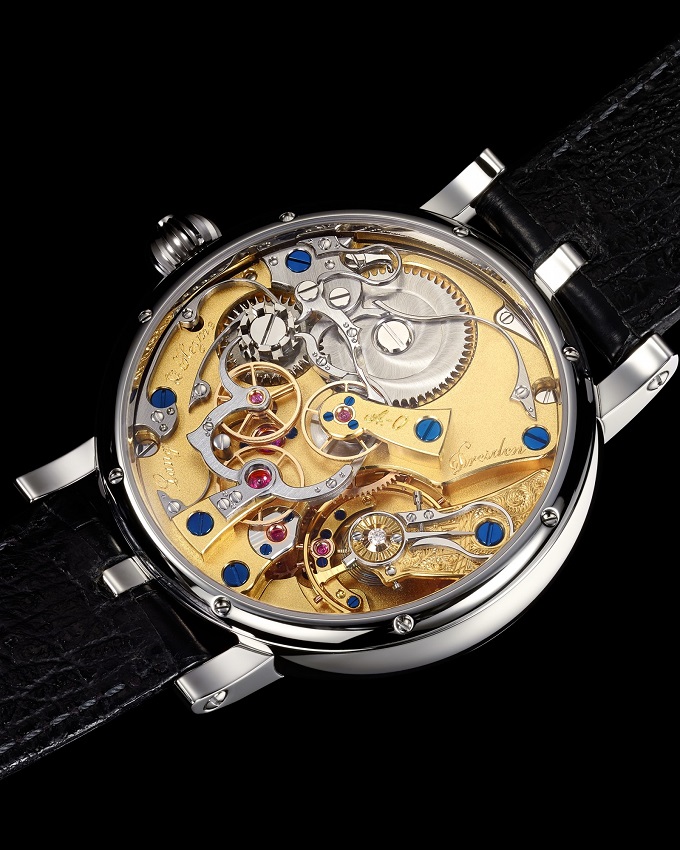
Note the diamond set above the balance of this Lang & Heyne Albert – photo, Lang & Heyne
What prompted me to explore this however was very much at the more extreme end of the spectrum. During a recent visit to London to visit a few watch outlets, I was lucky enough to be able to see a couple of “rainbow” watches – ones which are gem-set in such a way that the colouration of the stones used show a gradient in the colours of the rainbow. I haven’t had the chance to handle such watches before, and despite gem-set watches not really being my thing, they were nonetheless very impressive to see up close.
After this experience and acknowledging the different lengths that some brands go to with this craft, I wanted to educate myself about what goes into these watches and explore gem-setting in watchmaking in general – hopefully you find it an interesting area, too!
Gem-setting in watchmaking
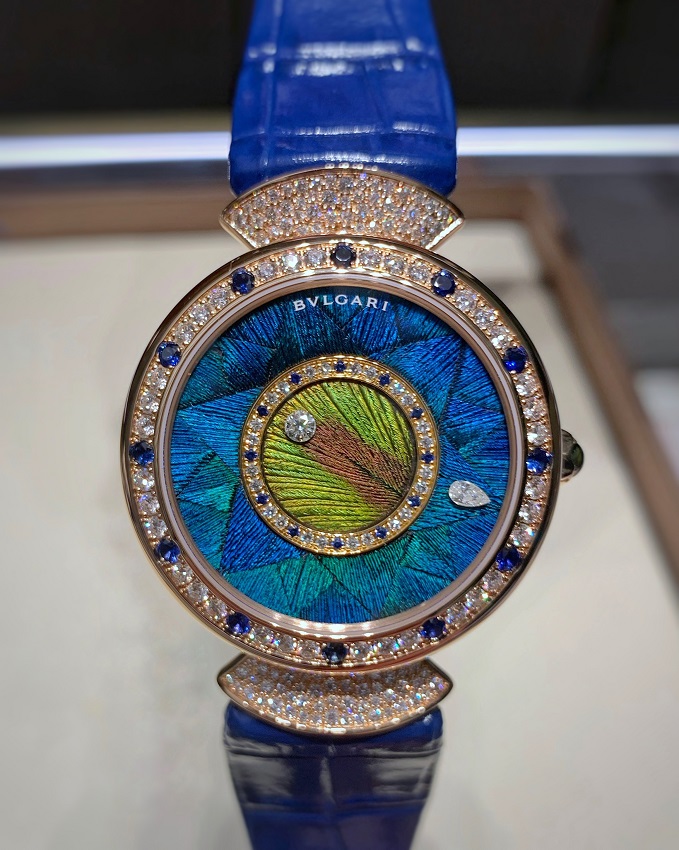
Bulgari Divas' Dream Peacock Dischi gem-set case
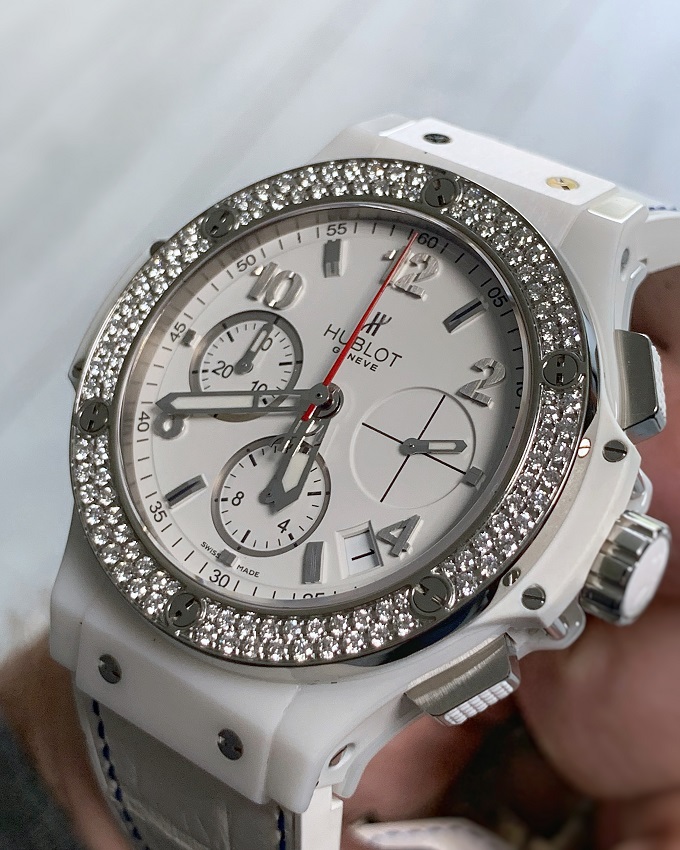
Hublot Big Bang Aspen with gem-set diamond bezel
Gem-setting is an age-old craft, and has been around for centuries, but is also one which has evolved over time with advancements and different techniques being developed.
Before any actual gem-setting work begins, there are a variety of things for gem-setters to consider beforehand pertaining to the design of the piece. There are different cuts that can be applied to stones, offering different characteristics and suiting different designs, and there are different stones that might be preferable to use depending on their individual nuances and how delicate or fragile they might be – I found it interesting to learn that diamonds are considered somewhat easier to work with than other stones such as sapphires given they are a much harder stones (in fact diamond is the hardest known material on Earth), which makes perfect sense but wasn’t something I’d really considered previously.
There are different types of cuts that can be applied to stones, and then depending on the cuts and the stones themselves there are then different types of setting techniques to choose from. So let’s take a look at a few of the different types of cuts and settings.
Different stone cuts
The round brilliant cut is the most popular and cut of diamond, with a round shape when seen from above and looking down at the flat “table” surface, with 57 facets cut into the stone designed to maximise the amount of light reflected within the stone itself to get that extra bit of sparkle.
The baguette cut, as the name might suggest, is a long rectangular cut of stone that normally has a length of between 3 and 5 times that of the width, and specifically with angled, uncut corners. This shape means there are fewer facets with around 14, and so a little less sparkle than a round brilliant cut.
Emerald cut stones are similar to baguette cuts in that they are rectangular in shape, however the corners are cut and so the number of facets in the stone are more, typically the same 57 facets found with a round brilliant cut and so also sparkle more than a baguette cut.
Of course, different shapes of cut lend themselves to being used to adorn different parts of a watch. For instance, a round cut would make more sense to adorn a round watch dial. Baguette or emerald cuts with longer, straight edges lend themselves more toward bezels or bracelet links. Equally both are often used as hour markers, depending on the design of the watch, which will also dictate in some respects how the stones are secured to the watch.
Most of these different examples of cuts and their applications in decorating a watch are visible on this rare Patek Philippe Nautilus 5719:
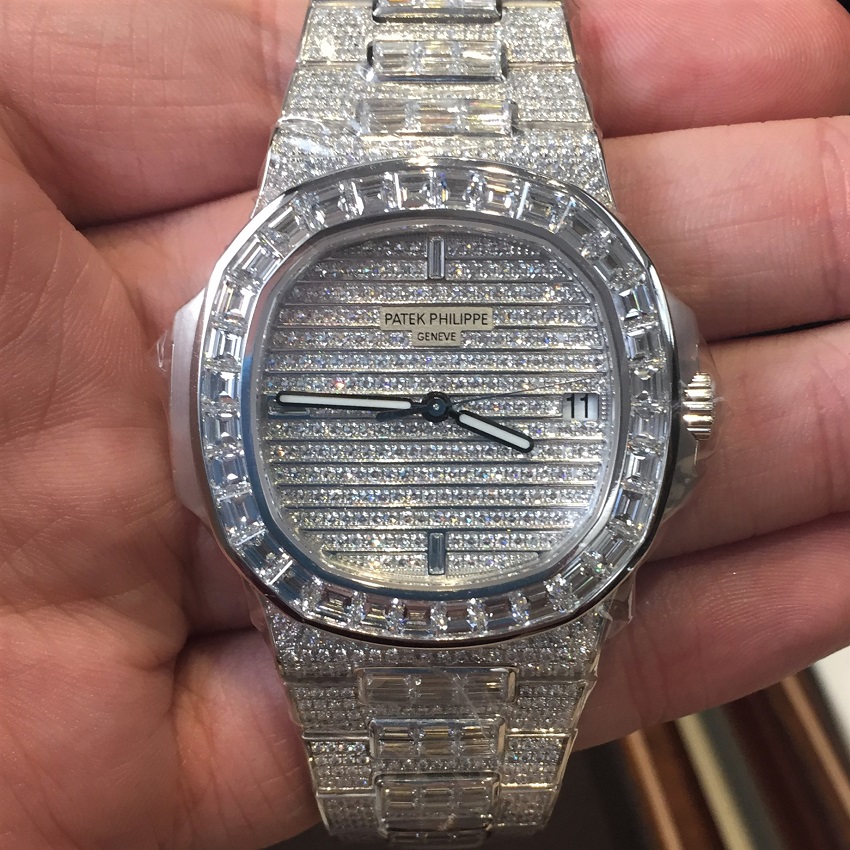
The Patek Philippe Nautilus 5719 is an excellent showcase for different techniques of gem-setting in watchmaking
Different setting techniques
So how are these different cuts of stone secured to the watch surface? Well, ultimately it depends on the stone, the cut, and of course where the gem-setter is looking to affix the stone to the watch.
Bezel setting is where the stone is essentially wrapped in the surrounding metal with a “lip” around the edge, which also serves to secure it in place. Specifically with gem-setting in watchmaking this type of setting is used (somewhat unsurprisingly) with gem-set bezels, or gem-set crowns, including the Patek Philippe Calatrava 5196P shown earlier.
Claw setting is in some respects similar to bezel setting, except rather than securing the stone around the entire edge it is held in place by little prongs (or claws) from the surface metal which hold the stone in place. Examples of this setting can be seen often in jewellery such as rings.
Pavé setting is a more complex evolution of claw setting, taking its name from the French word for “paved”, and the finished effect is reminiscent of a cobblestone pavement. The gem-setter will first make a set of holes in the surface of the watch, such as the dial, case, or bracelet. These holes need to be perfectly uniform in size, depth and perfectly aligned, so that equally sized stones can be set alongside one another, using the metal from the surface to secure the stones in place. With gem-setting in watchmaking, this if often found on the dial of a watch, known as a pavé dial, such as the Patek Philippe Nautilus 5719 above.
Another evolution of pavé setting is snow setting, whereby different sized stones are placed in a seemingly random array, with the goal to cover as much of the surface as possible whilst maintaining a pleasing aesthetic. Given the technique requires creating the right sized holes into the surface metal, this has to be planned in advance to absolute perfection to account for the different sizes of stones that will be used.
An invisible setting is one where there is no visible metal securing the stones in place as is seen with bezel, claw or pavé settings. When executed to the highest standards, there is no discernible gap or spacing between the stones, and the overall effect is that they are securing one another in place. This is achieved by securing the stones from behind to the surface, often with slots being cut into the back of the stones allowing them to ‘clip’ onto a metal rail hidden from view.
As I’m sure you can well imagine, each of these techniques require incredible patience and skill to execute flawlessly, with many years of experience to get to the level required for high-end watchmaking. Gem-setters also need to take the utmost care so as not to damage the stones – one blemish or scratch and the stone can no longer be used. Much like enamelling, a single tiny mistake can send the entire piece back to square one. No bueno.
Other considerations when gem-setting in watchmaking

Rolex "Rainbow" Daytona 116595RBOW
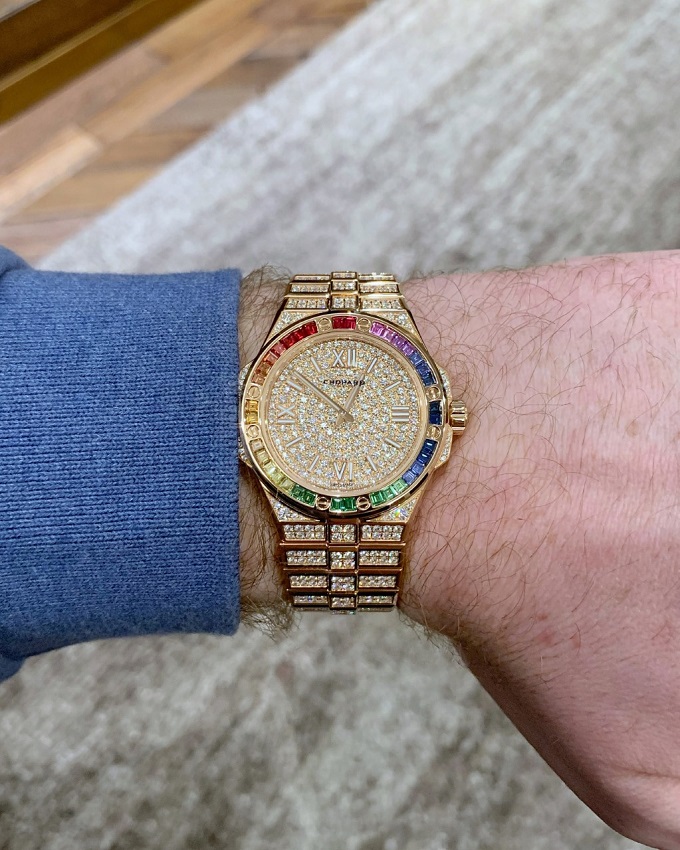
Chopard Alpine Eagle with rainbow bezel 295370-5005
As difficult and challenging as the cut and setting processes are, you still of course need the stones themselves! The process of cutting and polishing the stones takes time, and then when gem-setters look to bring the stones together for a particular piece, their attention to detail must be meticulous in the extreme to ensure that the stones are right for the piece.
Take for instance the rainbow watches I was lucky enough to see the other day which prompted this article (shown above) – the colour of each stone is different to those next to it, however too big a jump in colour from one stone to the next in the context of the “rainbow” would be immediately obvious to the naked eye.
Or similarly, when setting a bezel with stones of a particular colour for example, all the stones must be of the exact same size, colour and clarity – after all, if you had 20 stones around the bezel and just one was even slightly different, it would again be immediately obvious.
This is a significant reason why heavily gem-set watches such as these rainbow pieces are such a rare commodity; stones and diamonds of the required quality are rare enough, let alone stones and diamonds that are of equal quality, colouration, clarity, and brilliance, which are then brought together for a single piece.
Considering the effort that needs to go into gem-set watches, along with the rarity and quality of the watches themselves, it becomes easy to see why they are priced substantially higher than those without gem-setting. Those which are more heavily gem-set become increasingly rarer, increasingly more expensive, and some brands will even make them available only as “off-catalogue” pieces which are reserved for VIP clients.
And of course, on the occasions when they do come up at auctions, or are available on the pre-owned market, they fetch a significant premium above their list prices.
In Summary
Heavily gem-set watches aren’t something you see all too often, although of course those with a more discerning approach to gem-setting (such as diamond hour markers or bezels) are more common. I count myself incredibly lucky to have unexpectedly been able to try two very different rainbow gem-set watches in the same day!
Speaking to the attendants about these watches made me want to understand more about them, and having explored the skill and craft that goes into these objectively magnificent objects has left me in awe of what goes into creating them. Whilst heavily gem-set watches might not be my personal cup of tea, that ultimately has no bearing on being able to appreciate what goes into them, their rarity, and of course the incredible skills of the people behind bringing them to life them.
I think it is genuinely sad to think that a not-insignificant amount people would simply dismiss gem-setting in watchmaking without taking the time to learn what actually goes into these watches, and being less likely to be able to appreciate them for what they are.
If you have any questions, please get in touch via our Contact page, or via our Instagram.
You might also be interested in:
- Watch Finishing Techniques
- Exploring different watch enamelling techniques
- Spotlight: Lang & Heyne
- Watch Stationery and Gift Ideas
- Watch Books, Watch Boxes and more at the Watch Affinity Shop on Amazon (commissions earned)
As an Amazon Associate, I earn from qualifying purchases – thank you for your support

